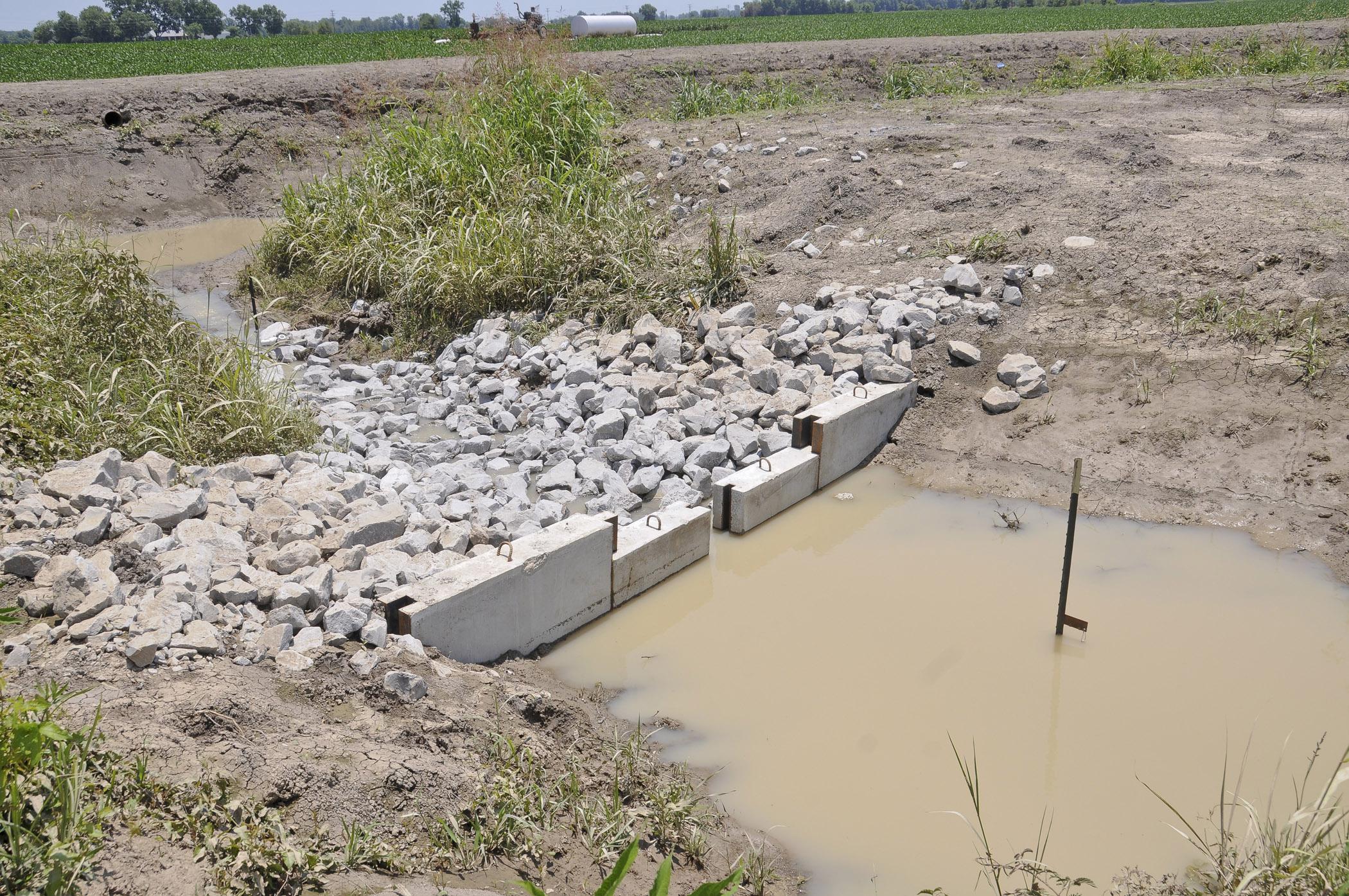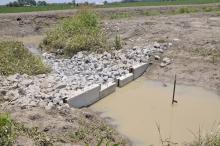Information Possibly Outdated
The information presented on this page was originally released on August 23, 2012. It may not be outdated, but please search our site for more current information. If you plan to quote or reference this information in a publication, please check with the Extension specialist or author before proceeding.
Sustainable farming controls water flow
MISSISSIPPI STATE – Much of agriculture’s success depends on effective water management, which must be done to keep both farmland and surrounding areas healthy.
Agriculture was a $6.7 billion industry in Mississippi last year, and the state is on track to match that value in 2012. That makes agriculture big business with a big responsibility to the environment.
Wes Burger, associate director of the Mississippi Agricultural and Forestry Experiment Station, said agricultural landscapes are intensely managed ecosystems that produce food, fiber and fuel to meet the needs of a growing global population with a growing appetite for goods and services.
“Meeting these growing demands in a sustainable manner will require efficient use of renewable natural resources,” Burger said.
“Natural communities, including wetlands, grasslands and forests, are an important component of these managed landscapes,” he said. “They produce essential environmental services, such as water filtration, nutrient cycling, soil conservation, aquifer recharge, pest management, pollination and wildlife habitat.
“Strategic incorporation of natural features into managed agricultural systems is the central tenet of conservation planning. Natural features contribute to the productivity of these systems and ensures their sustainability,” Burger said.
Robbie Kroger, an assistant professor of aquatic sciences in MSU’s Department of Wildlife, Fisheries and Aquaculture, is working to develop and improve conservation practices that work for agriculture and are environmentally sustainable. He works for MAFES, the MSU Extension Service and the MSU Forest and Wildlife Research Center.
“The primary focus of my research is mitigating what is in the water before it goes downstream,” Kroger said. “Water that leaves a farm may contain residual herbicides and unused fertilizers that will have an impact on area surface waters and ultimately, the entire watershed.”
Kroger is trying to lessen the chemical load in water leaving the farm and reduce the amount that goes downstream. He works with the Natural Resources Conservation Service to encourage producers to follow Best Management Practices, or BMPs, to manage nutrients.
“Many BMPs advocate surface water capture. We continue to encourage growers to follow these practices, but we have a new emphasis on reusing surface water,” Kroger said.
His focus is on nutrients, specifically on preventing them from leaving agricultural settings and making their way through area ditches, creeks and streams to the Mississippi River and then the Gulf of Mexico. Excess nutrients in the Gulf lead to massive algal blooms, which deplete available oxygen and create dead zones for marine life.
“Our goal is to pay close attention at home to the aquifers and river systems in the Delta and protect the local systems all the way down to the Gulf,” Kroger said.
To do that, Kroger’s work attempts to control surface drainage.
“We want producers to control runoff, slow it down, build places to hold and capture water, and let the sediments settle out,” Kroger said. “The same strategies are used to manage nutrients as are used with pesticides.”
Kroger has started the Research and Education to Advance Conservation and Habitat, or REACH, program to showcase these BMPs. Interested growers can enroll their farms in the program, giving them access to MSU research and Kroger’s assistance, and making their farms models of sustainability for others to imitate.
“REACH is for the farmer, by the farmer,” Kroger said. “Our goal is to create a network of cooperative farms with different types of agricultural practices that will showcase conservation practices, how well they work for agriculture and the environment, and serve as models for sustainable methods.”
Among the techniques being put into place are low-grade weirs, or small dams, that slow down runoff water. When water is slowed or held briefly, the microbes in the soil and vegetation pull nutrients out of the water so they can be used by plants, reducing the nutrients going downstream.
“We’re quantifying how effective these BMPs are at nitrogen removal and phosphorous reduction,” Kroger said. “No one else in the country is testing the BMPs we’re testing.”
Kroger’s work is funded through MSU and several state and federal agencies, including the Mississippi Department of Marine Resources, the Mississippi Department of Environmental Quality, the U.S. Department of Agriculture’s Natural Resources Conservation Service and the Environmental Protection Agency.



